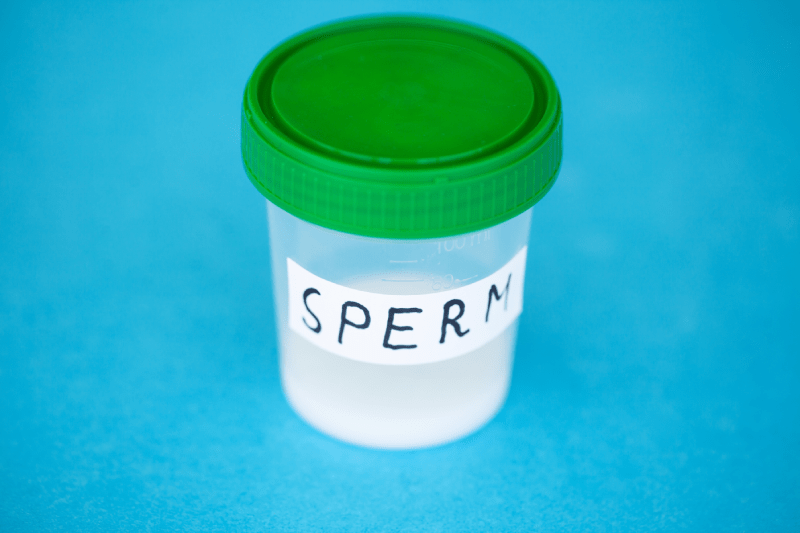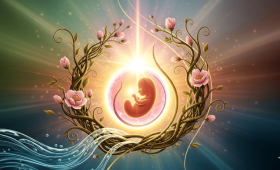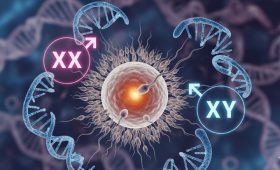What Is Azoospermia And How Is It Diagnosed
Azoospermia is the condition where no sperm cells are found in a man’s semen following two separate semen analyses. This diagnosis is supported by a detailed urology examination, hormonal tests (such as FSH, LH, Testosterone), and genetic tests (Karyotype analysis, Y-Chromosome microdeletion).
The absence of sperm in the semen can mean either that sperm production is entirely absent in the testes (non-obstructive Azoospermia) or that the channels are blocked, preventing the sperm from exiting, despite production (obstructive Azoospermia). Establishing the correct diagnosis is vitally important for determining the appropriate treatment path (surgical retrieval or donation) and is the first step in keeping the couple’s hopes alive.
What Is The Difference Between Obstructive And Non-Obstructive Azoospermia
Obstructive Azoospermia is a condition where sperm production is normal in the testes, but there is a blockage or absence in the ducts (e.g., vas deferens) that enable sperm to exit. In these cases, the success rate for surgical sperm retrieval is close to 100%. Non-Obstructive Azoospermia, on the other hand, refers to conditions where sperm production is severely impaired or non-existent.
These cases are more challenging, but the possibility of finding sperm via Micro-TESE still exists. The distinction between these two types is made through hormonal tests and physical examination. This differentiation clarifies the couple’s chances of biological fatherhood and the complexity of the treatment process.
Is Azoospermia A Permanent Condition
Although a diagnosis of Azoospermia means no sperm is found in the semen, it does not mean this condition is a permanent barrier to having children. Especially in obstructive cases, the blockage can be corrected or sperm can be retrieved surgically. Even in non-obstructive cases, focal (localized) sperm production may still be occurring within the testicular tissue. Treatment success depends on the underlying cause and the correct surgical method being applied. Therefore, instead of resigning to the condition, the chance of finding sperm using advanced surgical and laboratory techniques should always be investigated.
Which Initial Tests Are Performed Before Starting Treatment
Before starting Azoospermia treatment, a series of comprehensive tests are applied to the male. These primarily include a detailed physical examination and blood tests measuring hormonal levels such as FSH, LH, Testosterone, and Prolactin. Additionally, to investigate genetic causes, Karyotype Analysis and the Y-Chromosome Microdeletion Test are performed to detect potential deletions related to sperm production on the Y-Chromosome. The results of these tests determine the type of Azoospermia and establish the critical roadmap for planning surgical sperm retrieval (TESE/Micro-TESE).
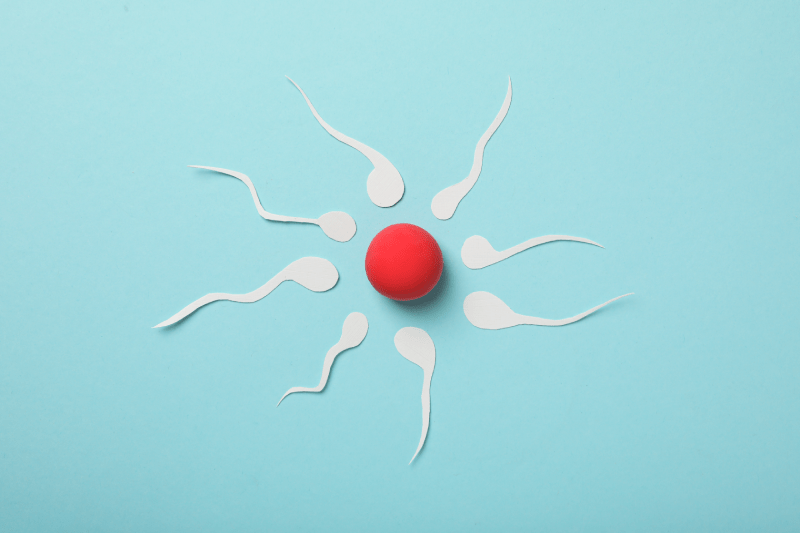
What Is The Fundamental Difference Between Micro-TESE And TESE
TESE (Testicular Sperm Extraction) is a procedure that searches for sperm by taking a random biopsy from the testicular tissue. Micro-TESE (Microsurgical TESE), on the other hand, is based on the surgeon magnifying the testicular tissue under an operating microscope to target the enlarged and lighter-colored tubules with the highest sperm production potential.
Micro-TESE significantly increases the chance of finding sperm compared to random biopsy, even in cases of non-obstructive Azoospermia. It also minimizes damage to the testicle and the risk of complications, as less tissue is removed. Therefore, Micro-TESE is the most current and preferred method.
What Is The Success Rate Of The Micro-TESE Method
The success rate of the Micro-TESE method varies depending on the type of Azoospermia. In non-obstructive Azoospermia cases, the sperm retrieval rate within the testicular tissue typically ranges between 40% and 60%. This rate is achievable thanks to Micro-TESE’s more delicate operation compared to standard TESE. The retrieved sperm is then used to fertilize the partner’s egg using the ICSI method. The chance of success is directly dependent on the surgeon’s experience and the quality of the laboratory used, which is why intermediary agencies like Cure Holiday recommend experienced centers.
What Are The Risks Of Surgical Sperm Retrieval Procedures
Surgical sperm retrieval (Micro-TESE) procedures, like any surgical intervention, carry minimal risks. These risks typically include mild pain after surgery, swelling in the testes (hematoma), or rarely, the possibility of infection. One of the most significant risks is a temporary drop in the testes’ hormone production function (Testosterone levels) after the operation, although this usually corrects itself over time. Performing the procedure minimally invasively and by an experienced andrologist minimizes these risks. Patients must strictly follow the doctor’s advice after surgery.
Can Frozen Sperm Cells Be Used Years Later
Yes, sperm cells obtained through surgical sperm retrieval (TESE/Micro-TESE) or donation can be stored for years using cryopreservation (freezing). Sperm cells frozen in liquid nitrogen (-196°C) do not biologically deteriorate over time. As a result, if sufficient sperm was obtained in the initial operation, the couple will not need a new surgery for subsequent attempts to have children. The viability and fertilization capability of thawed sperm are almost the same as fresh sperm, providing long-term security for couples.
What Is The Role Of The Female Partner’s Age In Treatment Success
The ultimate success of Azoospermia treatment, meaning live birth rates, largely depends on the female partner’s age and egg quality. Even if sperm is retrieved surgically from the male or donation is used, the chance of pregnancy is significantly higher in women under 35 due to the higher quality and number of eggs. As the woman’s age exceeds 38-40, the genetic quality of the eggs decreases, and IVF/ICSI pregnancy rates fall. Therefore, it is recommended that couples diagnosed with Azoospermia act quickly and do not postpone treatment.
What Is ICSI And Why Is It Mandatory
ICSI (Intracytoplasmic Sperm Injection) is a specialized form of IVF treatment and is mandatory in Azoospermia cases. In this method, a single sperm cell, retrieved surgically or obtained through donation, is injected directly into the egg cell using a specialized needle. When the sperm count is very low or the sperm’s natural fertilization ability is low, ICSI guarantees the highest fertilization success. For the limited number of valuable sperm obtained in Azoospermia, ICSI is a critical step that maximizes the chances of fertilization.
What Is The Alternative If Micro-TESE Is Unsuccessful
If no viable sperm cells are found after the Micro-TESE operation, the couple’s path to biological fatherhood is closed. In this case, the most reliable and fastest alternative for having children is sperm donation. Sperm donation enables pregnancy using the genetically screened donor sperm, chosen to match the couple’s physical characteristics, in countries where international legal regulations are flexible. Cure Holiday supports couples at this stage by directing them to international accredited centers where sperm donation is legally and ethically possible, managing the entire process.
Is Sperm Donation Legal In Turkey Or TRNC
Sperm, egg, or embryo donation practices are strictly forbidden in the Republic of Turkey due to legal and ethical regulations and are subject to severe legal penalties. However, the Turkish Republic of Northern Cyprus (TRNC) has more flexible laws regarding this issue, and sperm donation procedures are legally possible through strictly screened, anonymous donors. This makes the TRNC one of the most important international treatment destinations for couples needing sperm donation. Cure Holiday also works with these legal and ethical centers, offering a safe route to couples.
How Is The Donor Selection Process Conducted
When the sperm donation route is chosen, the donor selection process is carried out with extreme diligence, and the donor’s identity is kept confidential. Donors undergo comprehensive physical and psychological evaluations, tests for infectious diseases (HIV, Hepatitis, etc.), and screening for major genetic diseases. Couples typically make their choice by considering the donor’s basic characteristics such as blood type, ethnic origin, physical features (hair, eye color, height), and educational level. Cure Holiday provides referrals to centers that assist couples in finding the most suitable donor for their expectations during this sensitive process.
Is It Possible For The Child To Resemble The Father With Donor Sperm
It is not possible for a child conceived using donor sperm to genetically resemble the father because half of the child’s genetic material comes from the donor. However, during the donor selection process, attempts are made to select a donor whose physical characteristics (such as height, weight, hair, and eye color) show maximum resemblance to the father, based on the couple’s requests. This can help the child’s appearance fit the family. Furthermore, since the parenting role is built on love, care, and shared experiences independent of a genetic connection, the strength of family bonds is prioritized.
What Are The Ethical Concerns Of Sperm Donation
While sperm donation is a method that allows for having children, it brings with it certain ethical and emotional concerns. The most important ethical issues revolve around finding a balance between protecting the donor’s anonymity and the child’s future right to know their genetic origin. Additionally, when and how to explain parenthood through donation to the child is an important psychological consideration. International centers apply strict rules to resolve these ethical dilemmas. Cure Holiday directs couples to centers that provide accurate information and support regarding these ethical issues.
What Genetic Screenings Do Sperm Donors Undergo
Sperm donors undergo very comprehensive genetic and health screenings to ensure safe donation. These screenings include Karyotype Analysis and carrier testing for common genetic diseases like cystic fibrosis and thalassemia. Additionally, detailed tests are conducted for infectious diseases such as Hepatitis B and C, HIV, and Syphilis. These mandatory screenings aim to maximize the quality and reliability of the donor material. International accredited centers provide transparent results of these genetic tests, reassuring the couples.
How Long Does The Micro-TESE Operation Take
The Micro-TESE operation is a microsurgical procedure typically performed under general anesthesia in a standard operating room environment. The duration of the operation varies depending on the complexity of the sperm search process and whether sperm is found, but it usually lasts between 2 to 4 hours on average. Experienced surgeons meticulously examine the areas with the highest potential for sperm production while minimizing damage to the testicular tissue. The patient can usually be discharged on the same day or the day after the surgery.
Can Azoospermia Be Treated With Medication
Medication treatment for Azoospermia is only applicable to certain non-obstructive cases caused by hormonal imbalance. For instance, if sperm production has ceased due to low LH or FSH levels, it may be possible to reinitiate sperm production using medications (e.g., HCG or other gonadotropins) aimed at balancing these hormones. However, Azoospermia caused by genetic reasons (Y-Chromosome deletion) or structural problems like duct blockages cannot be treated with medication and requires surgical intervention. It is essential to make this distinction clear before starting treatment.

What Is The Effect Of Lifestyle Changes On Sperm Production
The effect of lifestyle changes on Azoospermia depends on the underlying cause of the condition, but they can play a general role in supporting sperm production. Quitting smoking and alcohol consumption, eating a healthy and balanced diet, maintaining an ideal weight, and regular exercise can positively affect testicular health. It is particularly important to protect the testicular area from excessive heat. Although these changes do not always lead to sperm being present in the semen, they can indirectly help increase the chance of finding viable sperm through surgery. However, it must be remembered that these changes cannot replace surgical treatment.
Is The Cost Of TESE Covered By Health Insurance
Whether the cost of advanced surgical sperm retrieval procedures like Micro-TESE is covered by national or private health insurance varies greatly depending on the health system of the country and the scope of the insurance policy. While such treatments may be partially covered in countries like Germany or Japan, some private insurance policies may only cover diagnostic tests. In the case of treatment abroad (like in the TRNC), insurance coverage is generally not valid, and costs are borne by the couple. Intermediary agencies like Cure Holiday provide transparent information about overseas costs to assist with budget planning.
Why Might PGT Be Necessary In Azoospermia Cases
PGT (Preimplantation Genetic Testing) may be necessary in Azoospermia cases for two main reasons. First, if a genetic problem (e.g., Y-Chromosome deletion or chromosomal abnormality) caused Azoospermia, PGT-A or PGT-M is applied to check the risk of this condition being passed to the embryo. Second, because the number of retrieved sperm is very low, PGT is used to ensure the health of each embryo, thereby increasing the success of pregnancy. This allows the couple to transfer the highest quality embryo and maximize the chance of a healthy pregnancy.
How Does Cure Holiday Help Find A Specialist Surgeon
Cure Holiday provides couples diagnosed with Azoospermia with access to internationally specialized surgeons and centers with high success rates in Micro-TESE. The process begins by reviewing the couple’s medical history, followed by identifying accredited centers that apply the most suitable treatment protocol and have proven surgical experience. Cure Holiday organizes the initial consultation appointments with these surgeons, manages all logistical processes, and ensures the couple receives treatment from the most reliable hands. This provides great convenience, especially for couples facing international travel and language barriers.
What Are The Psychological Effects Of An Azoospermia Diagnosis
Receiving an Azoospermia diagnosis can lead to serious psychological effects on men and couples, such as shock, shame, guilt, and profound sadness. The male partner’s identity as a father may be questioned, and significant pressure can be placed on the couple’s relationship. Seeking psychological counseling and support is vital during this challenging process. International centers collaborating with Cure Holiday offer professional psychological support services to help couples remain emotionally strong, focus on the treatment process, and proceed with realistic hope.
Is It Possible To Have More Than One Child From A Single TESE Procedure
Yes, if a sufficient number of viable sperm cells are found during a single Micro-TESE procedure, some of these sperm are prepared for use in that immediate cycle, while the majority of the remainder are preserved through cryopreservation (freezing) for future attempts. This means that when the couple wishes to have a second or third child using the same sperm, the male does not need to undergo another surgical procedure. This provides a major advantage, especially in Azoospermia cases, for performing the surgery once and achieving a long-term solution.
What Is The Role Of Hormonal Balance In Sperm Production
Hormonal balance is a fundamental condition for healthy sperm production. FSH (Follicle-Stimulating Hormone) and LH (Luteinizing Hormone) are secreted by the pituitary gland and regulate sperm production and Testosterone secretion in the testes. Deficiencies or excesses in these hormones (e.g., high FSH, a cause of non-obstructive Azoospermia) can severely impair sperm production. When hormonal disorders are detected, medication treatment to restore this balance may enable sperm to appear in the semen in some cases or increase the success of Micro-TESE.
What Is The Difference Between Azoospermia And Oligospermia
Oligospermia is the condition where sperm cells are present in the semen, but the count is below the normal limits (less than 15 million per milliliter) set by the World Health Organization (WHO). Azoospermia, on the other hand, is the absence of any sperm cells in the semen. In Oligospermia, fertilization is usually possible with ICSI. Azoospermia indicates either a lack of production or a blockage and necessitates surgical sperm retrieval (Micro-TESE). This distinction is a critical medical diagnosis that completely changes the treatment method and process.
Is There An Age Limit For Men In Azoospermia Treatment
There is no definitive upper age limit for Azoospermia treatment, unlike in women. Sperm production can continue into advanced age in men. The Micro-TESE operation can be successful as long as viable sperm cells are found within the testicular tissue. However, it should be considered that the risk of sperm DNA damage may increase in advanced age. Therefore, comprehensive genetic evaluations and careful examination of the quality of retrieved sperm are recommended for men aged 50 and over before treatment.
What Preparations Are Necessary Before Micro-TESE
Comprehensive medical and logistical preparations must be made before the Micro-TESE operation. Medically, the patient’s all hormonal and genetic test results are required to be current. The use of blood-thinning medications may need to be stopped a few weeks before the surgery. Logistically, coordination is essential because the partner’s egg retrieval procedure must be performed on the day of the surgery. For overseas treatments, Cure Holiday manages all logistical planning, such as passport, visa, and flight arrangements, allowing the couple to focus solely on the surgery.
How Long Is The Recovery Period After Surgery
The recovery period after Micro-TESE surgery is generally short, and pain is minimal. Most patients are discharged a few hours or at most one day after the surgery. There may be mild pain and swelling for the first few days, which is managed with simple pain relievers. Patients are typically advised to rest for one week and refrain from heavy physical activity and sexual intercourse. The time to return to completely normal activities varies from person to person but generally takes one to two weeks.
What Is The Treatment For Sperm Backflow (Retrograde Ejaculation)
Sperm backflow (Retrograde Ejaculation) is the condition where semen escapes back into the urinary bladder (bladder), which can lead to the absence of sperm in the semen (Aspermia, not Azoospermia). The treatment for this condition does not require surgery. First, medication treatment is applied to the patient to try to ensure normal ejaculation. If medication treatment fails, the sperm within the urine sample taken from the bladder is isolated in a laboratory setting, without the need for surgery. These sperm can then be successfully used in the IVF/ICSI procedure, which is a situation with a high chance of finding sperm.
How Does Vasectomy Reversal Compare To Micro-TESE
Vasectomy reversal (Vasovasostomy) is the procedure of reopening the ducts after a vasectomy (ligation of the ducts), which is a cause of obstructive Azoospermia. Micro-TESE is the procedure of searching for sperm within the testis. Vasectomy reversal can offer the chance of natural pregnancy, but the success rate depends on the time elapsed since the vasectomy. Micro-TESE, however, offers a sure chance of finding sperm and pregnancy with IVF/ICSI. In cases where a long time has passed and the chances of successful duct opening are low, couples usually prefer the more guaranteed result of the Micro-TESE/IVF path.
How Does The IVF Process Work With Donor Sperm
The IVF process with donor sperm proceeds similarly to a normal IVF cycle. The female partner uses hormone medications to develop eggs. After the eggs are collected, they are fertilized in the laboratory using the ICSI method with donor sperm selected and prepared according to international standards. After monitoring the resulting embryos for 5-6 days, the healthiest embryo is transferred to the woman’s uterus. This process is the most reliable and fastest method of achieving pregnancy for couples with sperm absence and is meticulously organized in legal centers by Cure Holiday.
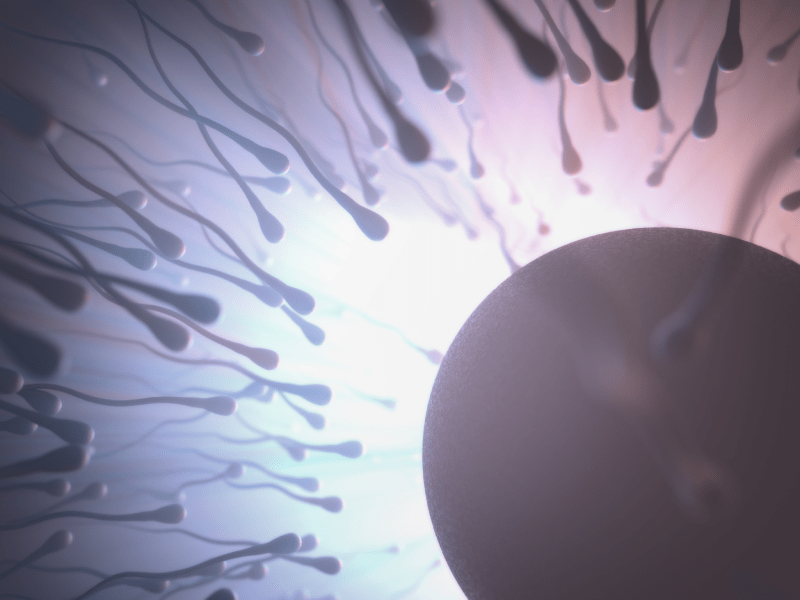
How Does Cure Holiday Manage The Overseas Treatment Process
Cure Holiday offers a comprehensive management process for couples seeking overseas treatment due to Azoospermia. The process begins with the review of the couple’s current medical reports and the determination of the most suitable surgical (Micro-TESE) or donation programs. Following this, Cure Holiday arranges appointments with international accredited centers, and plans all travel logistics, including flights and accommodation. They provide language support and medical consultation throughout the treatment, ensuring couples focus solely on their treatment. This transparent and professional support guarantees that the process is safe and stress-free.
Is It Possible To Find Sperm Even If The FSH Level Is Zero
No, an FSH (Follicle-Stimulating Hormone) level of zero is, on the contrary, a positive sign for non-obstructive Azoospermia. While a high FSH level indicates that the testes are underperforming in sperm production, a low FSH level usually points to the problem being a hormonal deficiency originating from the pituitary gland. Azoospermia cases due to low FSH are the group that responds best to medication treatment, and sperm production can be reinitiated with hormonal supplements. Therefore, an FSH level of zero is a situation that offers high hope for biological fatherhood and may not require surgery.
What Support Is Offered To Couples In This Emotional Process
The Azoospermia diagnosis and treatment process are emotionally challenging for couples. Centers collaborating with Cure Holiday offer various supports to assist couples during this process. These include professional psychological counseling sessions, referrals to support groups, and stress management techniques specific to the treatment. The goal is to help couples manage the feelings of isolation and disappointment, support each other, and make treatment decisions with a stronger psychological outlook.
What Does A High FSH Level Mean
A high FSH (Follicle-Stimulating Hormone) level indicates that the testes are inadequate in sperm production, and the body is forcing the brain to produce more FSH. This situation generally means that sperm production is severely impaired (Primary Testicular Failure) and constitutes the most challenging cases of non-obstructive Azoospermia. High FSH means that treatment may be more difficult, and the chance of finding sperm may be low. However, the possibility of finding sperm with Micro-TESE is not entirely eliminated even in patients with high FSH, so surgical exploration should be attempted.
When Should Hormonal Treatment Be Applied
Hormonal treatment should be applied to patients diagnosed with Azoospermia who are found to have low hormonal levels (especially low FSH and LH) as a result of the tests performed. The treatment aims to reactivate sperm production in the testes by supplementing the deficient hormones externally. The duration of this treatment can generally vary between 3 to 6 months. The purpose of hormonal treatment is to bring the sperm count to a measurable level in the semen or at least to increase the chance of finding sperm with Micro-TESE.
Is A Biopsy Necessary Before Micro-TESE
No, in current practices and advanced technology centers, routine diagnostic biopsy is not recommended before the Micro-TESE operation. These biopsies, previously performed to check for the presence of sperm, can damage the testicular tissue and reduce the success of a future Micro-TESE operation. Micro-TESE is accepted as a therapeutic surgical procedure performed specifically for the purpose of searching for and finding sperm. Therefore, proceeding directly to Micro-TESE after correct diagnosis and planning is considered the most appropriate approach.
How Is Blockage Opened In Obstructive Azoospermia
In cases of Obstructive Azoospermia, microsurgical methods such as Vasovasostomy or Vasoepididymostomy can be applied to open the blockage in the sperm ducts. These surgeries aim to rejoin the cut or blocked ducts, allowing sperm to naturally pass into the semen. However, if the blockage is too complex or the surgical intervention is unsuccessful, the most guaranteed path is to retrieve sperm with Micro-TESE (or methods like PESA) and proceed to IVF/ICSI treatment with these sperm.
What Is The Chance Of Pregnancy With Frozen Sperm
The chance of pregnancy achieved using sperm cells stored via cryopreservation (freezing) does not differ from the chance achieved using fresh sperm. Freezing and thawing processes preserve the DNA integrity of viable sperm cells, and these cells can successfully fertilize the egg using the ICSI (microinjection) method. The chance of pregnancy primarily depends on the woman’s age, egg quality, and the quality of the transferred embryo. This means that the frozen sperm stock is a great assurance for the couple.
What Is The Importance Of Medical Records In Overseas Treatment
All medical records (hormonal test results, genetic test results, previous biopsy reports) are of vital importance in the overseas treatment process. These documents enable the international specialist, to whom Cure Holiday directs you, to correctly understand your condition and determine the most appropriate treatment protocol (Micro-TESE or hormonal treatment). Having all records translated into English and organized accelerates the treatment commencement process and prevents unnecessary test repetitions. This is the first and most crucial step to be taken for the success of overseas treatment.
What Does The Result Of The Y-Chromosome Microdeletion Test Indicate
The Y-Chromosome Microdeletion Test detects losses (deletions) in the genetic regions (AZFa, AZFb, AZFc) on the Y chromosome related to sperm production that can cause male infertility. Complete deletions in the AZFa or AZFb regions mean that the chance of finding sperm in the testes is very low or impossible. However, in deletions of the AZFc region, the chance of finding sperm with Micro-TESE is high, which is encouraging for the couple. The result of this test directly determines the surgical decision and the couple’s need for genetic counseling.
How Does The IVF Process Change For Azoospermia
The IVF (In Vitro Fertilization) process changes for Azoospermia only in the male’s sperm retrieval stage. While the female partner continues with the normal IVF cycle (hormone stimulation and egg retrieval), the male partner undergoes the Micro-TESE surgical procedure on the day of egg retrieval. All remaining stages (fertilization with ICSI, embryo culture, and transfer) are the same as standard IVF. This synchronization is critical for achieving the highest chance of fertilization using fresh sperm and fresh eggs.
What Expectations Should Couples Have When Starting Treatment
Couples should have realistic expectations by accepting that Azoospermia treatment is a complex process. Success is not always guaranteed on the first attempt, and multiple IVF/ICSI cycles may be needed. Even if sperm is found, embryo quality and the woman’s age determine the final outcome. Couples should understand the difference between surgical success rates (finding sperm) and pregnancy success rates (live birth). Cure Holiday plays an important role in managing these expectations and informing the couple at every step.
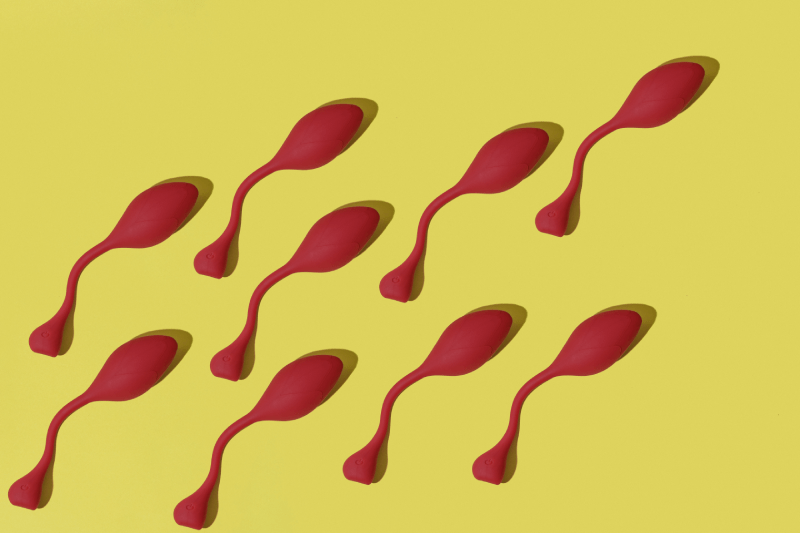
Which Conditions After Micro-TESE Require Emergency Intervention
Some rare conditions after the Micro-TESE operation may require emergency intervention. These include uncontrollable severe pain, high fever (sign of infection), rapidly growing swelling or bruising (severe bleeding/hematoma) in the operative area, and excessive discharge from the wound site. If any of these symptoms appear, contact the surgeon or emergency services immediately. It is important for patients to closely monitor themselves during the postoperative period and not to underestimate the symptoms.
What Are The Advantages Of Cure Holiday In Overseas Treatment
Cure Holiday offers many advantages to couples seeking overseas treatment for complex male factor infertility conditions like Azoospermia. The biggest advantage is providing direct access to legal and ethical centers in the TRNC for options, such as sperm donation, which are not legal in Turkey. Additionally, selecting an internationally accredited center and surgeon with high success in Micro-TESE, managing all logistical organization (travel, accommodation), and continuous medical consultation support throughout the treatment significantly reduces the stress of couples during the process.
What Happens To The Remaining Embryo If Sperm Is Not Found
After Micro-TESE, if healthy embryos created with the retrieved sperm are not transferred, they are frozen (cryopreservation) with the couple’s consent and stored. These embryos can be used for future child requests or in case of a failed attempt. The storage period and the fate of the embryos are subject to the legal regulations of the country where the treatment is performed. Couples must obtain detailed information and provide written consent regarding the storage period, annual fees, and donation or disposal options for the embryos through Cure Holiday.
What Is The Importance Of Laboratory Quality For Successful Treatment
The ultimate success of Azoospermia treatment depends as much on the surgeon’s skill as it does on the quality of the embryology laboratory. The highest level of technology and experienced embryologists are required for the successful isolation, preparation, and fertilization of the egg with ICSI using the few precious sperm obtained with Micro-TESE. Laboratory quality is critical for the healthy development of embryos up to the blastocyst stage and the reliability of PGT analyses. Cure Holiday collaborates only with laboratories that meet these standards and have international accreditation.
Start Your Parenthood Journey With Cure Holiday In Case Of Sperm Absence
The diagnosis of sperm absence (Azoospermia) does not end your dream of having children; instead, it directs you toward advanced scientific solutions such as Micro-TESE and sperm donation. You are not alone in this complex process.
Cure Holiday is ready to guide you with our expertise in international reproductive health:
- Access to Micro-TESE Experts: We provide you with access to accredited centers with the best surgeons in the field, who have demonstrated high success rates in this challenging surgical method.
- Assurance of Donation Option: We refer you to international centers operating within a legal and ethical framework for the sperm donation option, which is not legal in Turkey.
- Full Logistics Management: We manage all your processes, including flights, accommodation, appointment coordination, and language support, throughout your treatment.
Take the most reliable and transparent steps in your journey to parenthood with Cure Holiday.
